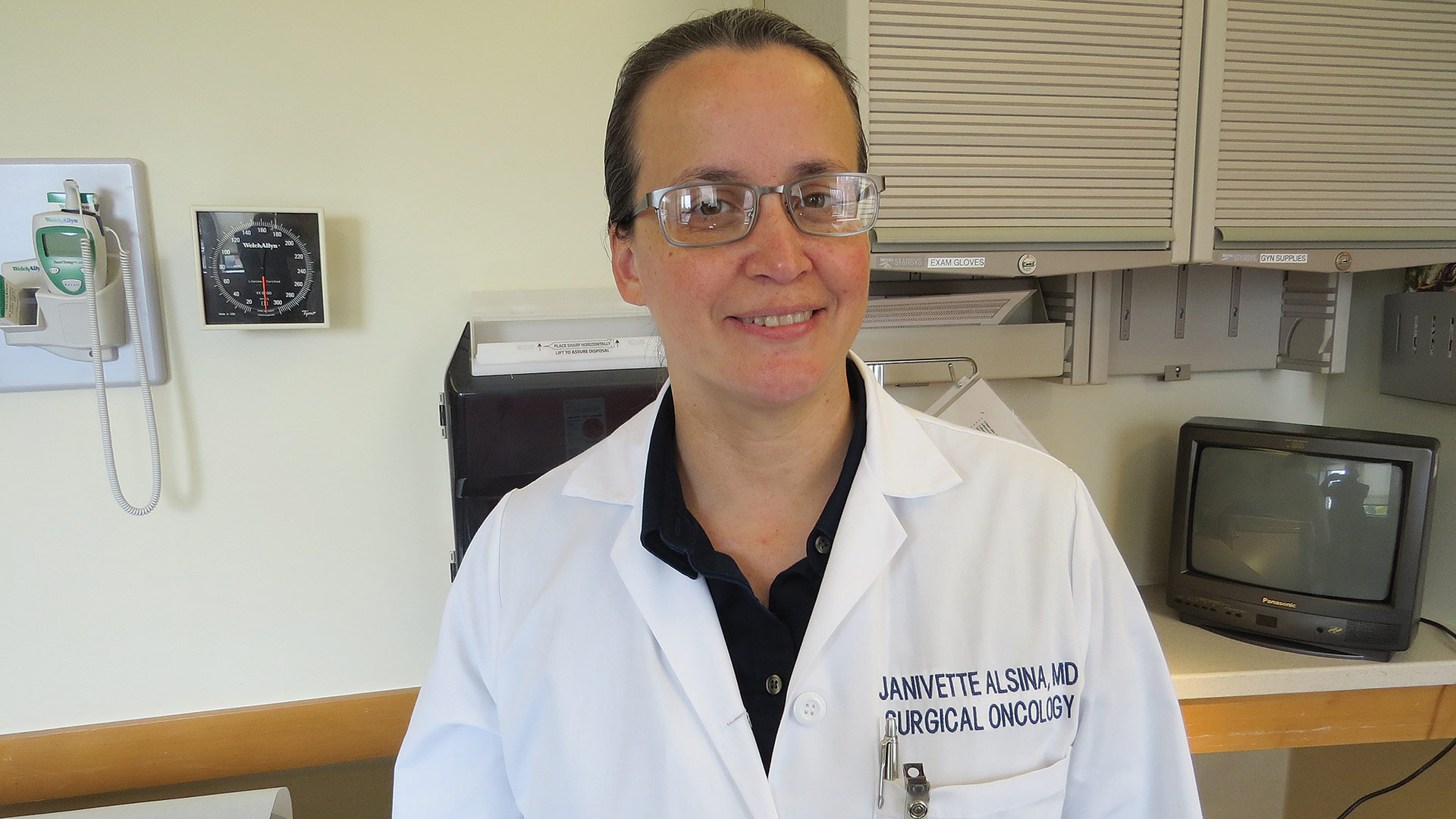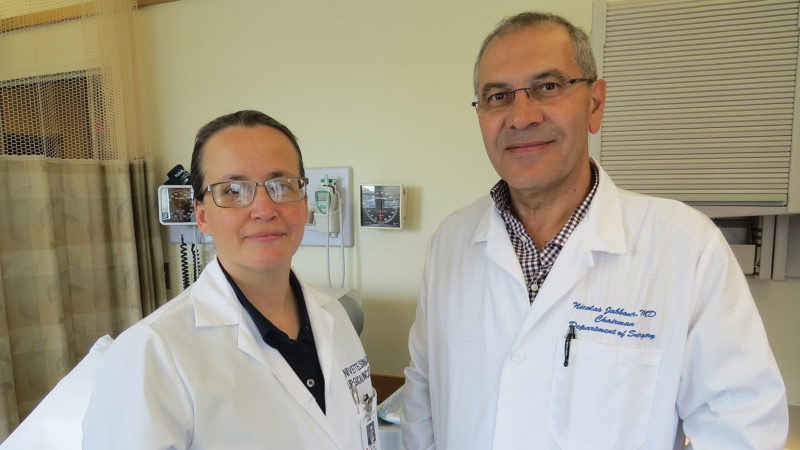‘What Is Pancreatic Cancer?’
Jeopardy! Host’s Battle Sheds Some Needed Light on a Killer
By GEORGE O’BRIEN
Alex Trebek is certainly not the first person of note to be diagnosed with and treated for pancreatic cancer. Indeed, the disease has claimed the lives of Patrick Swayze, Steve Jobs, Aretha Franklin, Luciano Pavarotti, and others who rise to the status of ‘celebrity.’
But the ongoing battle being waged by the immensely popular host of Jeopardy! has helped shine a light of sorts on this particularly deadly form of cancer. And such light is needed, said those who treat it, because there is much that is assumed, but not really known about this disease when it comes to the general public.
Indeed, not known by many in the general public is that there are two basic forms of pancreatic cancer, and the survival rates are much different for both.
The more common, and more aggressive, type of tumors are adenocarcinomas, which most often form in the exocrine cells founds in the pancreas ducts, said Dr. Janivette Alsina, a surgical oncologist at Baystate Health who specializes in hepatobiliary and pancreas surgery, noting that this is the cancer that Trebek is battling and the one that claimed the life of Swayze.
The other form of pancreatic cancer is known as a neuroendocrine tumor, she noted, adding that, with these tumors, which are more rare, the survival rate is much higher.

“These tumors are less aggressive, meaning they don’t spread as rapidly,” she explained. “Patients live longer, and there are lots of options for treating patients with this type of tumor.”
Many people hear those two words ‘pancreatic cancer’ and immediately assume it is the more aggressive type, which can lead to high levels of anxiety, said Alsina, adding this stress is only heightened when people visit the internet and get a look at the survival-rate numbers.
“I see patients come to my clinic, some of them have neuroendrocrine tumors, but because they’ve searched on the internet for information and found other, global information on pancreatic cancer, they’re very scared,” she told HCN. “They’re scared because the numbers they see are not great.”
But these numbers are getting better, said both Alsina and her colleague, Dr. Nicholas Jabbour, chairman of the department of Surgery at Baystate, noted that, a decade ago, the survival rate for adenocarcinoma was perhaps 4% at five years, and now that number is much closer to 10%.
“They’re scared because the numbers they see are not great.”
“Although that doesn’t seem like much, it’s more than double what it was,” said Alsina, attributing this progress to new and aggressive chemotherapy regimens in combination with surgery. “We’re seeing better results, but we’re not quite there yet.”
Jabbour agreed, and noted that real progress — with this cancer and virtually all other forms — will come not through surgery, but rather with genetic, chemical, and immunologic treatments (or a combination of them) along with surgery.
“Chemotherapy is a shotgun approach,” he explained. “You give drugs that are toxic for the cancer cells, but also toxic for the normal cells. The future is going to be personalized care — every tumor is different and every person is different; can we identify the cancer cells in this particular patient and attack only those cells?”
For now, the survival rates for pancreatic cancer, and especially adenocarcinoma, remain far lower than they are for most other forms of cancer.
The main reasons for this, they noted, are that pancreatic cancer is often very difficult to detect — there are no screening processes for the disease — and few if any outward signs of it, as there are with other forms of cancer such as melanoma and breast cancer, at least in its early stages.
“With breast cancer and lung cancer, a significant part of the improvement rate has to do with early detection and screening rather than treating it stage by stage,” he explained. “With pancreatic cancer, we’re not there yet.”
Meanwhile, there are no obvious ways to reduce one’s risk of getting pancreatic cancer, as with smoking and lung cancer, said Jabbour, adding that some signs, especially unexplained weight loss, jaundice, and abdominal pain, do materialize in the later stages, often too late to change the eventual outcome.

For this issue and its focus on cancer care, HCN talked with Jabbour and Alsina about pancreatic cancer, and why education is so important when it comes to this notorious killer.
By the Numbers
The National Cancer Institute (NCI) ranks pancreatic cancers as the 11th-most common cancer in the U.S. The risk of developing cancer of the pancreas increases significantly with age. According to the NCI:
• In 2019, an estimated 56,770 Americans will be diagnosed with cancer of the pancreas;
• Each year, pancreatic cancer accounts for roughly 3% of all new cancer diagnoses and more than 8% of all cancer deaths in the U.S.;
• 97.5% of all new pancreas cancer diagnoses are in people 45 years and older;
• 89% of all new diagnoses are in people 55 and older;
• 66.5% of all new cases are in people older than 65; and
• Men are at a slightly higher risk of developing pancreatic cancer than women.
Beyond these statistics, though, is a considerable amount of misperception and assumption-making when it comes to this disease, much of it resulting from its reputation as an aggressive form of cancer, and one of the most fatal.
As noted, Trebek’s somewhat public battle against the disease — he announced his diagnosis to viewers in the spring and has provided several updates through various media outlets since — has brought the disease front and center.
“Tumors that don’t present with symptoms that can be detected early, particularly by patients, are obviously more difficult to catch early.”
And, as noted, that’s a positive development, said those we spoke with, because education is needed on this disease, and a case like Trebek’s can only help people better understand this type of cancer, how it’s treated, and what patients can expect.
But education can’t change some of the basic facts about pancreatic cancer, said Jabbour and Alsina, who noted, for example, the difficulty with detecting it in its early stages, as can be done with many other cancers. Then there’s the fact that the number of people diagnosed with the disease continues to climb while many others, such as lung cancer, are declining.
“The cancers that we’re able to detect early are the cancers that typically have better outcomes,” Alsina explained. “With skin cancer, we can see that there’s something on our skin that’s changing, and with breast cancer, usually, but not always, there’s a palpable mass — you can notice that there’s something different.
“Tumors that don’t present with symptoms that can be detected early, particularly by patients, are obviously more difficult to catch early,” she went on. “Unfortunately, pancreatic cancer doesn’t cause any pain.”
Elaborating, she said one thing she and others teach medical students about is something called ‘painless jaundice,’ where the patient’s skin and the white of their eyes turn yellow, but without any accompanying pain.
“By the time they develop pain, it’s usually at an advanced stage that’s not immunable to surgery,” she continued, adding that, while researchers are working diligently to develop a screening process for pancreatic cancer, one does not exist yet.
“They’re trying to find blood-based testing, rather than imaging,” Alsina noted. “Is there a blood test we can send out that will tell us what patients may be at risk of having a malignancy or developing a malignancy? Nothing has been approved to this point.”
On the treatment side, meanwhile, there has been some progress made, said Jabbour, and this has been reflected in the survival-rate numbers, but not as much as with many other cancers, such as melanoma.
“For pancreatic cancer, we have some improvement in chemotheraphy, but it is not revolutionary,” he explained. “It’s definitely better than five or 10 years ago, and I believe ongoing research in genetic treatment, immunotherapy, and in chemotherapy to target the cells to be treated will be the turning point.
“We’re getting closer,” he went on, sounding an optimistic tone regarding cancer treatment in general but also the prospects of improving the survival rates for pancreatic cancer. “Most of the researchers in academic centers and drug companies are moving in that direction, so I’m very hopeful for the near to medium-term future that we will have significant improvement with new technology.”
Maybe the most alarming thing about pancreatic cancer is that the numbers appear to be climbing, although no one can pinpoint why, said Alsina, who wrote a paper on this subject while she was in residency.
“Nine years or so ago, the number [of Americans diagnosed each year] was 38,000; now it’s more than 50,000,” she said. “And we don’t understand what’s driving this. We know why there’s a decline in lung cancer — fewer people are smoking — but we don’t know what’s leading to this increase in pancreatic cancer rates.”
Getting Answers
Perhaps the answer to that nagging, alarming question will come soon through additional research, she noted, adding that, in the meantime, she and others in this field will continue their efforts to educate people about pancreatic cancer.
And education is necessary, because while much is known about this killer, much more is assumed, often to the detriment of those diagnosed and their loved ones.
As noted, Alex Trebek isn’t the first celebrity to be diagnosed with this disease, but his battle can only serve to bring this killer under a brighter spotlight, perhaps accelerating the pace of progress.



